Major brand marketers and innovators will gather at the tenth annual edition of Portada Miami in the Hotel EAST on April 18 and 19 to discuss topics like Voice-Based Technology, Gamers and Gambling, Attribution Models for Digital Media Agencies, App Marketing and much more. Register now here!
Innovators and Brand Leaders attending Portada Miami are members ofPortada's powerful Council System of Brand Marketers and Agency Execs.
To ready the discussion for Portada Miami, Portada's Chair of the Travel Marketing Board Trip Barret wrote the article below on 4 Ways Airlines Can Learn From Major Retail Brands.
What: With Amazon's launch of Amazon Go a "first" in the Retail Industry, we look back at another game-changing 'first' in the airline industry: the introduction of the first 747 by Pan Am.
Why it matters: Both the Airline and Retail Industries are having to reinvent themselves continuously to be both profitable as well as the preferred choice of consumers. Looking at how Amazon vs the Airlines build their Consumer / Brand relationships, we can see which efforts bring more "value" into that relationship and, ultimately bottom line.
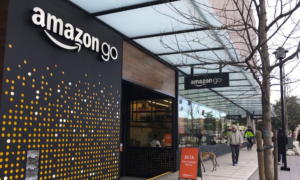 The news came out on January 22nd that Amazon had officially launchedAmazon Go, widely believed to be the next transformative, and arguably disruptive step in the retail industry. This reminded me of a similar, widely heralded launch on January 22nd, in 1970, by Pan Am: the Boeing 747. The introduction of that flight greatly expanded air travel throughout the world, allowing lower fares and more non-stop flights over longer distances.
The news came out on January 22nd that Amazon had officially launchedAmazon Go, widely believed to be the next transformative, and arguably disruptive step in the retail industry. This reminded me of a similar, widely heralded launch on January 22nd, in 1970, by Pan Am: the Boeing 747. The introduction of that flight greatly expanded air travel throughout the world, allowing lower fares and more non-stop flights over longer distances.
 While the Airline and Retail Industries may have more perceived differences than similarities, the visions of Pan Am's Juan Trippe and Amazon's Jeff Bezos to make their globally-recognized companies bigger, bolder, and more ready to reach everywhere, are certainly in lockstep. But, unlike Pan Am, long recognized as a trailblazer faded into the history books of Iconic Brands, Amazon continues to generate increased demand and loyalty from its core customers, while creating new opportunities to bring new customers into the fold. In this article, I outline the main ways airlines can learn from the successful efforts Amazon has introduced.
While the Airline and Retail Industries may have more perceived differences than similarities, the visions of Pan Am's Juan Trippe and Amazon's Jeff Bezos to make their globally-recognized companies bigger, bolder, and more ready to reach everywhere, are certainly in lockstep. But, unlike Pan Am, long recognized as a trailblazer faded into the history books of Iconic Brands, Amazon continues to generate increased demand and loyalty from its core customers, while creating new opportunities to bring new customers into the fold. In this article, I outline the main ways airlines can learn from the successful efforts Amazon has introduced.
1. The Classic 4 P's: Product, Price, Promotion, and Place
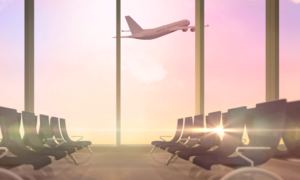 The Airline Industry today is certainly much different from the glory days of Pan Am —passengers are a commodity, customer loyalty has dwindled as loyalty programs are devalued, aircrafts are likened to real estate (pitch vs profit), and while progress has been made in employee / management relations, the overall customer service “guest experience” still has a long way to go.
The Airline Industry today is certainly much different from the glory days of Pan Am —passengers are a commodity, customer loyalty has dwindled as loyalty programs are devalued, aircrafts are likened to real estate (pitch vs profit), and while progress has been made in employee / management relations, the overall customer service “guest experience” still has a long way to go.
Looking at the Airline Industry through the lens of Jerome McCarthy’s Marketing Mix of the 4Ps –Product, Price, Promotion, and Place, it is easy to conclude that most US Airlines have executed well against this model (and should continue to do so). In fact, you could even say that two additional P’s have been added successfully to the mix: Performance (load-factors, scheduling, fuel efficiency) and Profit (especially in ancillary fees).
Airlines have managed to add two additional P's to the mix: Performance and Profit.
Airlines are increasingly investing in newer aircraft models (Product) and consumers have even more fare options, thanks to the introduction of “Basic Economy” (Price). In today’s Digital World, messaging, targeting and multiple offer options are available (Promotion), and given the consolidation of the Legacy Carriers as well as the growth of Low-Cost and Ultra Low-Cost Carriers, more and moredestinations are being served by giving consumers more options (Place).
2. More P's to Take Into Account
However, in the process of getting the 4 P’s right, the Consumer / Brand relationship has been increasingly overlooked, and it contributes a great deal to the long-term success of a company. In this context, two more P’s should be considered: ‘Persona’ (how the consumer feels about his or her ‘relationship’ with the brand, about its stance on social issues and employee relations, and how well he or she is treated), and ‘Preference’ (the consumer’s commitment / loyalty to the brand and vice versa).
If you take care of [your employees], they'll take care of your costumers.
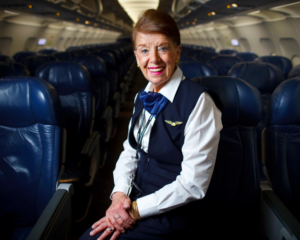
Bette Nash is the oldest working flight-attendant, with over 60 years of service at American Airlines.
Videos and social media postings of on-board interactions between flight crew and passengers are as disturbing as seeing uniformed crew members picketing for new contracts; and these can impact a customer’s perception and choices. As Bill Marriott learned from his father, and still incorporates at Marriott, “If you take care of them (employees), they'll take care of your customers and the customers will keep coming back again and again." American Airlines recently celebrated Bette Nash’s 60th anniversary as a Flight Attendant; when interviewed, Bette revealed the ‘secret’ of how a Brand can successfully engage the ‘Persona’ point: "I love my people. I know my customers. I know what they want. The airline thinks names are important, but I think people's needs are very important. Everybody wants a little love."
The airline thinks names are important, but I think people's needs are very important. Everybody wants a little love.
The second P, Preference, has really seen major changes in the last few years as the Airline Industry has massively changed their loyalty programs (devaluing miles, increasing award level pricing, adding minimum spend requirements, and fare-based vs distance-based mileage earnings) while trying to convince their loyal flyers that it is in their best interest. However, there is an inherent flaw in this approach: with almost all airlines, travelers must re-qualify their status each year to continue to be ‘appreciated and valued’ by the Airline. If the traveler’s business with the Airline reduces in a given year, the ‘love’ or status returned will also diminish—which then begins a downward spiral of the overall relationship between consumer and brand.
3. All Relationships Need a True Purpose
This yearly ‘dance’ reminds me of a poem by an unknown author which outlines the 3 types of friendships: 1) Friends for a Reason (to meet a need, but ends once that is accomplished), 2) Friends for a Season (to grow and seek new experiences which bring great joy, but are also of limited duration), and 3) Friends for Life (indefinite relationships built upon emotions and commonly shared experiences.) By applying these concepts to Consumer / Brand relationships, my assumption would be that a majority of the relationships consumers have with brands would fall into the “Reason” or “Season” categories, with few falling into the “Life” category.
[A buyer's] decision may fall into the 'Brand for a Reason' category, more so by accident than by design.
Given the transparency of the digital world, the airline and hospitality industries, in general, fit squarely into this analogy. For the infrequent, or price-sensitive traveler who will most likely seek out options via the web on Expedia, Priceline or Kayak vs checking with an individual airline, his or her decision falls into the “Brand for a Reason” category —which may be a one-time occurrence or may happen again—, more so by accident than by design or conscious choice.
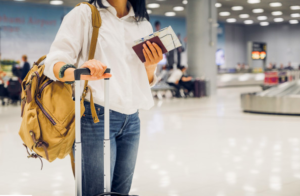 Road warriors will maximize their efforts to concentrate their business with one carrier in order to achieve the ever-elusive elite status. These travelers fall into the “Brand for a Season” category—and while they make the best of it during the high-travel years, they ultimately know (or come to realize) that the relationship won’t last forever and ultimately they will part ways with the Brand (unless they are in the small group of Ultra Road Warriors who manage to earn one of the “Status for Life” Elite levels.)
Road warriors will maximize their efforts to concentrate their business with one carrier in order to achieve the ever-elusive elite status. These travelers fall into the “Brand for a Season” category—and while they make the best of it during the high-travel years, they ultimately know (or come to realize) that the relationship won’t last forever and ultimately they will part ways with the Brand (unless they are in the small group of Ultra Road Warriors who manage to earn one of the “Status for Life” Elite levels.)
Then there are those consumers who do establish a relationship with a brand, perhaps first through the original 4P’s of marketing. As they mature, they find the brand also satisfies and delivers on their Persona and Preference expectations—they’ve entered the “Brand for Life” category.
4. Taking a page from Amazon's book
Having consumers enter the "Brand for Life" category is a huge accomplishment for an Airline, or for any industry, and it is exactly what Jeff Bezos and Amazon have accomplished. From its inception, Amazon’s mission and vision have been “To be earth's most customer-centric company; to build a place where people can come to find and discover anything they might want to buy online, " and it has delivered on that since day one. The Four P's of Marketing-Check. Performance-Check. Profit-check out the stock price!. So how about Persona and Preference?
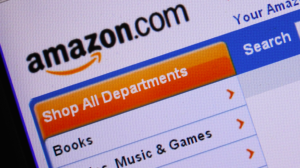 Customers are all treated equally well—whether a Prime Member or the occasional shopper. As it expands, Amazon continues to emphasize increasing its knowledge of its customers, while simplifying their lives as well as their purchasing decisions. It has grown from selling books, music, and videos, to bringing unlimited options to their customers across multiple touch-points—from consumer goods to groceries, to technology, to streaming content. Preference-Check. As Amazon narrows its search for its second headquarters (which will add new employment opportunities) and progresses with its newly announced efforts with Berkshire-Hathaway and JP Morgan to address employee health care costs/needs, it continues to show its leadership and vision for planning for the future, further endearing itself to its consumers, who have come to expect remarkable things from the company. Persona-Check.
Customers are all treated equally well—whether a Prime Member or the occasional shopper. As it expands, Amazon continues to emphasize increasing its knowledge of its customers, while simplifying their lives as well as their purchasing decisions. It has grown from selling books, music, and videos, to bringing unlimited options to their customers across multiple touch-points—from consumer goods to groceries, to technology, to streaming content. Preference-Check. As Amazon narrows its search for its second headquarters (which will add new employment opportunities) and progresses with its newly announced efforts with Berkshire-Hathaway and JP Morgan to address employee health care costs/needs, it continues to show its leadership and vision for planning for the future, further endearing itself to its consumers, who have come to expect remarkable things from the company. Persona-Check.
And so, January 22nd stands out as a significant date for two Iconic Brands albeit nearly 50 years apart: the launch of the first scheduled 747 flight, recalling Pan Am, the Airline that transformed the way the world travels, and the launch of Amazon Go, Amazon’s next step in meeting and exceeding its customers’ needs and expectations, and impacting the retail industry into the foreseeable future. The Airlines are much better positioned for success than Pan Am, but the true measure will be whether they can develop the strong Consumer / Brand Relationship with its customers the way Amazon does on an ongoing basis.
 Trip Barret is head of Travel Marketing Content and chairs the Portada's Travel Marketing Board, including top-notch executives from the Travel Industry like Jennifer Adams [MD-Integrated Marketing, American Airlines], Ricardo Casco [Global Sales & Integrated Marketing, Avis Budget Group], Pablo Chiozza [SVP USA, Canada & Caribbean, Latam Airlines], Alan Duggan [Regional VP Business Development, The Americas, Meliá Hotels], Roberto Muñoz [VP, Strategic Partnerships & Loyalty, Aeromexico], José Luis Pérez [Head, Marketing Performance, Volaris] , Luis Perillo [VP, Sales & Marketing, Caribbean & Latin America, Hilton], Ángel de la Tijera [Top Accounts Commercial Head Mexico & Latin America, American Express], and Alvaro Valeriani [Regional Vice President Sales & Marketing Latin America & Caribbean, Hyatt Hotels]. This board, as well as the other Portada councils, will meet at PORTADA MIAMI, on 18-19 April. Click here to save your spot!
Trip Barret is head of Travel Marketing Content and chairs the Portada's Travel Marketing Board, including top-notch executives from the Travel Industry like Jennifer Adams [MD-Integrated Marketing, American Airlines], Ricardo Casco [Global Sales & Integrated Marketing, Avis Budget Group], Pablo Chiozza [SVP USA, Canada & Caribbean, Latam Airlines], Alan Duggan [Regional VP Business Development, The Americas, Meliá Hotels], Roberto Muñoz [VP, Strategic Partnerships & Loyalty, Aeromexico], José Luis Pérez [Head, Marketing Performance, Volaris] , Luis Perillo [VP, Sales & Marketing, Caribbean & Latin America, Hilton], Ángel de la Tijera [Top Accounts Commercial Head Mexico & Latin America, American Express], and Alvaro Valeriani [Regional Vice President Sales & Marketing Latin America & Caribbean, Hyatt Hotels]. This board, as well as the other Portada councils, will meet at PORTADA MIAMI, on 18-19 April. Click here to save your spot!
 Trip Barret– More from portada, Travel MarketingTags: 4 Marketing P's, Alan Duggan, Alvaro Valeriani, Ángel de la Tijera V, Jennifer Adams, José Luis Pérez Rodríguez, Luis Perillo, pablo chiozza, Ricardo Casco, Roberto Muñoz, Travel industry, Trip Barret
Trip Barret– More from portada, Travel MarketingTags: 4 Marketing P's, Alan Duggan, Alvaro Valeriani, Ángel de la Tijera V, Jennifer Adams, José Luis Pérez Rodríguez, Luis Perillo, pablo chiozza, Ricardo Casco, Roberto Muñoz, Travel industry, Trip Barret
Trip Barret
Trip Barrett is joining Portada as the 2018 Head of Travel and Hospitality Content where he will develop and lead an Advisory Board of Marketing Executives from the leading companies in the Americas. Trip is a Global Marketing, Brand Management and New Business Initiatives Leader with extensive experience in the Hospitality and Tourism, E-Commerce, and Entertainment Industries across Latin America, Asia and Europe in addition to the United States. With his background and expertise, he is currently Consulting with Client companies looking to maximize their Brand Potential and Consumer Loyalty in existing as well as new Markets. Prior, Trip was with Starwood Hotels & Resorts for 13 years as Vice President of Brand Management for Latin America. He spent three years with Amazon as Director of International Business Development in Seattle, and eight years with the Walt Disney Company based in Mexico City, Miami, Buenos Aires and Hong Kong. Trip Graduated from Duke University with a BA in Economics, and received his MBA from The Wharton School, University of Pennsylvania. He is an avid traveler and has lived and worked in 9 countries on 4 continents; He is fluent in Spanish, Portuguese and English.
[contf] [contfnew] 
portada online
[contfnewc] [contfnewc]





